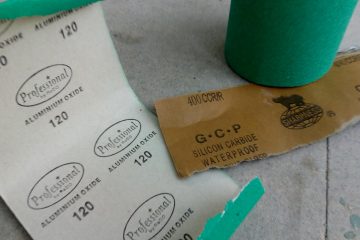The term ‘stain’ refers to products intended to add colour to the wood, enhancing grain patterns and figure. In repair work they are used to match the colour of damaged areas to the existing finish or can be applied to the whole piece to refresh the colour. They do not provide any protection to the wood surface.
The products sold as ‘exterior wood stain’ for finishing doors, windows etc. contain additional ingredients intended to prevent water penetration and are closer to paints or varnishes.
Stains and dyes can imitate the colour of different woods or be plain colours such as red or blue. Stains can be based on water, oils or spirit solvents. Stains can be intermixed or diluted, provided the solvent or diluent is the same.
Traditional stains, eg. Van Dyke, are derived from natural sources such as walnut shells. Modern stains use a range of chemical pigments to achieve their effect. It is important to do a test before committing to staining a piece as the process is not easily reversible.
Water-based stains tend to raise the grain and will require fine sanding after drying. A wipe over with the relevant solvent prior to applying the colour will help remove dust and ensure an even coat. Stains should be applied sparingly with a brush or rag and any excess removed before it can run or penetrate too deeply. Multiple coats may be required to get even coverage. Some areas may require more applications than others as timbers may vary in absorption or can differ in colour according to which part of the tree they are cut from. End grain will absorb stain far quicker than other surfaces and may need to be sealed with a clear coat before staining to control the absorption.
Spirit-based stains are challenging to apply evenly as they dry rapidly.
Stains need to dry before additional coats or finishes are applied or the stain may be dragged off by solvent in the subsequent layer.
Stains or dyes added to finishes, eg. tinted varnish, produce a less transparent result than the equivalent clear finish over stained wood. Damage to the surface will look more obvious as the colour comes off with any chips or scratches.


